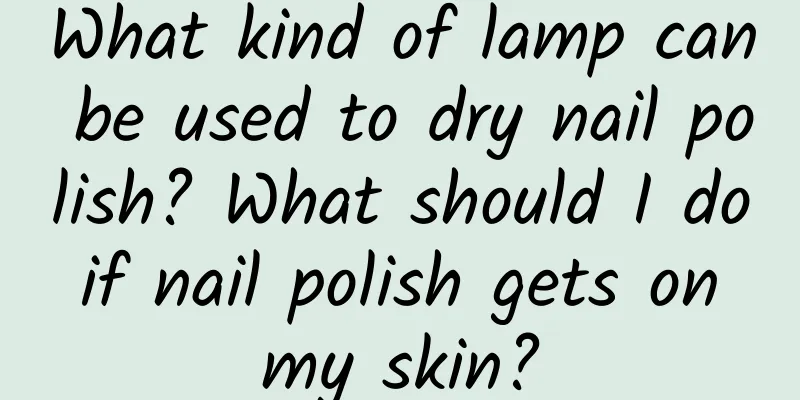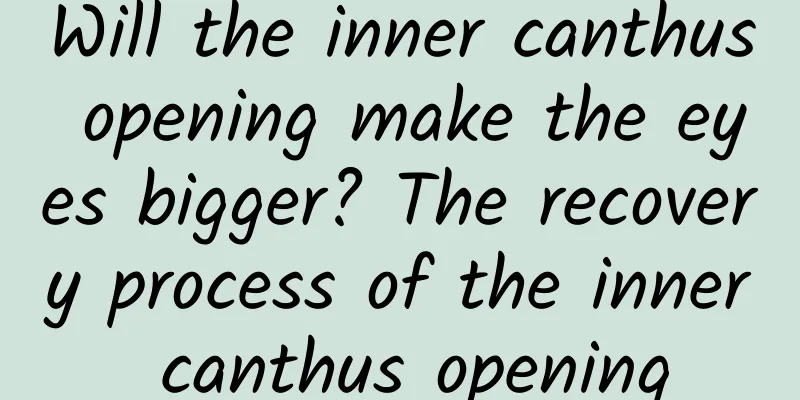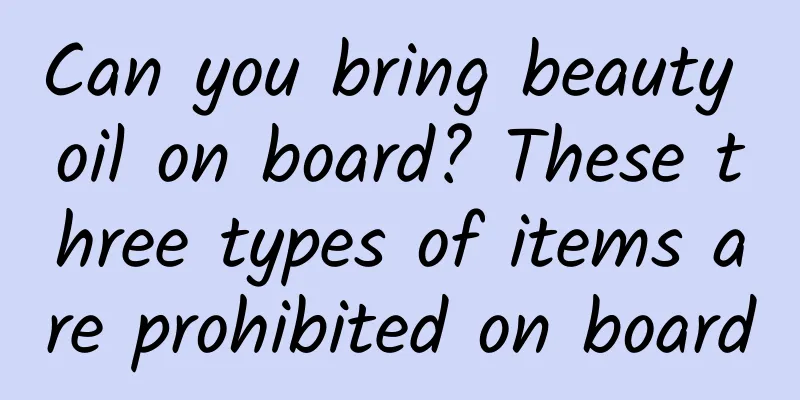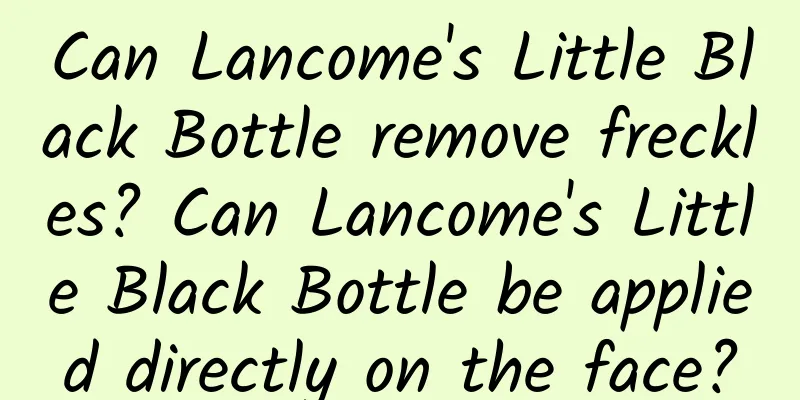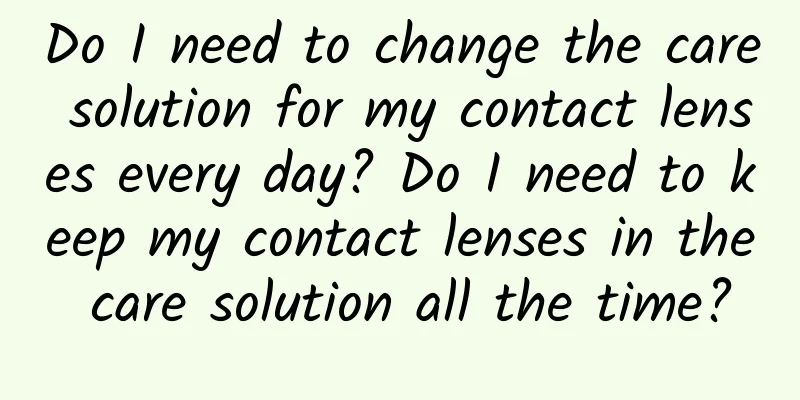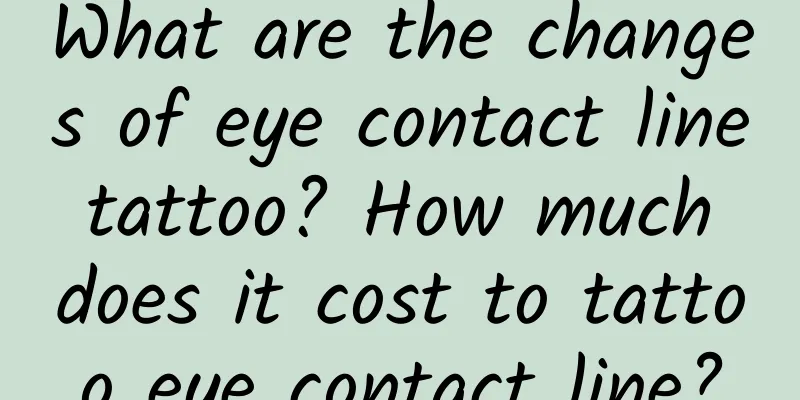Mung bean paste mask on the face stings. Is it an allergy if the mung bean paste mask stings?
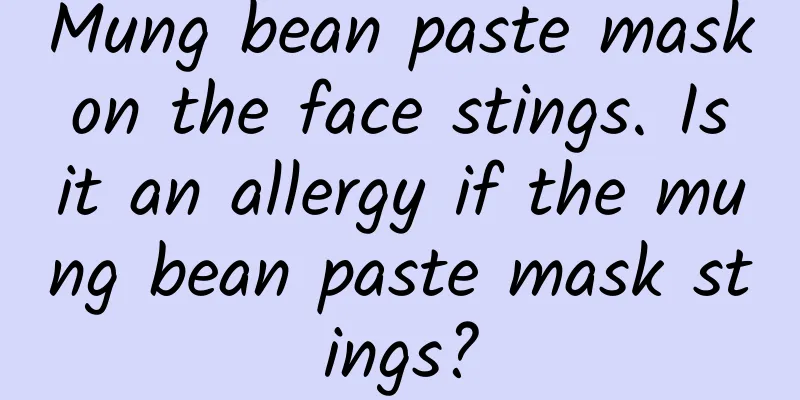
|
Mung bean paste mask is a kind of cleansing mask that can be seen frequently on the market. Because of its good efficacy, many people use it. However, there are some precautions when using mung bean paste mask. Here we need to first understand whether mung bean paste mask causes stinging on the face? Does stinging sensation when applying mung bean paste mask indicate allergy? Mung bean paste mask on face stingsThe stinging pain of the mung bean paste mask is abnormal. It may be due to the addition of other chemical ingredients to the mung bean paste mask, which irritates the face. If this happens, it is recommended that the patient stop using the mask. Because mung beans have the effects of clearing away heat and detoxifying, promoting diuresis and reducing swelling in traditional Chinese medicine. Therefore, when the mung bean mask is applied on the face, it will feel refreshing. After washing off the mung bean paste mask, the face will feel very refreshed and comfortable, and the skin will be very soft and smooth. If the patient washes off the mung bean paste mask and small red spots appear on the face, or even a little itchy, it is recommended that the patient stop using the mask in the future. Is it an allergy if I feel a stinging sensation when applying a mung bean paste mask?Case 1: When the skin is very dry, there will be some minor wounds on the surface, and the skin sensitivity will also increase. If you suddenly apply a mung bean paste mask, the skin will receive excessive nutrients and moisture, and it will easily feel stinging if it absorbs too quickly. Normally, the stinging will gradually disappear after 2-3 minutes of application on the face, and after applying it several times, the stinging will no longer occur. Countermeasures: Strengthen hydration at ordinary times. Use a moisturizing spray before applying a mung bean paste mask to avoid the stinging caused by dry skin. Case 2: People with sensitive skin who feel a strong tingling sensation accompanied by burning or itching when applying a mung bean paste mask are most likely allergic to the mask. Countermeasures: Wash off the remaining mask on your face and apply ice milk to calm your face. In addition, do an allergy test on the back of your hand before trying a new mask. Case 3: Considering the irritating ingredients, the quality of the mung bean paste mask is not up to standard. It contains more irritating ingredients, such as alcohol. After applying it on the face, if there are minor wounds or open acne on the face, it is likely to cause a tingling sensation. Countermeasures: Choose the mung bean paste mask carefully and choose the mask supplied by a regular manufacturer. Do not use it when there are more serious open acne on the face. How often should you apply mung bean paste mask?How often you should apply a mung bean paste mask depends on your skin condition and the speed of oil secretion. People with oily faces should use it more frequently, but no matter what skin type you have, it should not exceed 3 times a week. Give your skin time to rest and repair itself. Dry skin: once a week. People with dry skin have less oil secretion, so they can use a mung bean paste mask once a week. Neutral skin: 1-2 times a week. Oily skin: 2-3 times a week. Blackheads and waste keratin are produced faster in oily skin. Cleaning the oil in the pores in time is more conducive to the skin's absorption of nutrients and moisture. The mung bean paste mask takes a little time to dissolve and absorb the oil in the pores. Therefore, the time for applying the mask can be slightly extended, but it should not exceed 20 minutes in general. If you feel that the mask has become dry, it is recommended to spray a moisturizing spray on your face to prevent the mask from absorbing moisture or causing wrinkles. How to clean the mung bean paste maskYou can wet a face towel with water, gently massage and rub your face to remove the mask. After using a cleansing mask, the skin is relatively delicate, so we should be gentle in our cleaning method. Secondly, using a face towel can just remove the mask more cleanly, and the face towel can also achieve the best cleaning effect. First, clean your face with a cleansing product, then take an appropriate amount of the mask and apply it evenly on the face, remembering to avoid areas such as the eye area and lips. Wait quietly for about thirty to forty minutes, wipe off the mask with a wet face puff or face sponge, and finally rinse it with clean water. It is recommended not to use facial cleanser at the end, just clean water. After that, you can use skin care products normally and carry out daily skin steps. The frequency of use is two or three times a week. For sensitive skin, it is recommended to test the mask behind the ears before using it to see if it is not allergic before applying it on the face. |
<<: Do babies need sun protection? How to protect babies from the sun?
>>: Beijing MUJI sues Japan MUJI again. Which country is MUJI a brand from?
Recommend
What age is Clinique's double star spot-lightening essence suitable for? Which one is better, Clinique or SK2 spot-lightening essence?
Winter is the best time to whiten and lighten spo...
What is the cause of hyaluronic acid chin bruise? How to prevent hyaluronic acid chin bruise?
Hyaluronic acid chin injection is a plastic surge...
How to correct facial asymmetry? Causes of facial asymmetry
Nowadays, cosmetic surgery technology is so advan...
How about MLB's dad shoes? Are the soles of MLB's dad shoes hard?
Dad shoes are very popular in the past two years....
How to use nail extension glue? Is it more expensive to do nail extension or nail tips?
In our daily life, we often see people putting on...
How to remedy overspraying perfume? What are the harms of overspraying perfume to the body?
The middle and base notes of a perfume are more i...
What country is the brand of Zise? How effective is the Zise air cushion?
Zise is a cosmetics brand that we are all familia...
Do I need to wear clothes over my sports bra? Can seamless bras be worn as sports bras?
Sports bras have many benefits. When we exercise ...
Which kind of moisturizing cream is good in winter? Recommended moisturizing cream in winter
In autumn and winter, the climate is relatively d...
How to use a Casio watch How to set up a Casio watch
Casio watches are liked by many people. The style...
What is a nose pad? What is the function of a nose pad?
Everyone must have seen medical beauty and plasti...
Is radio frequency dark circle removal a laser? Is radio frequency dark circle removal effective?
Radio frequency beauty is a very popular medical ...
What are the benefits of wearing a hat in winter? What kind of hat can you wear in winter?
Hats have always been a very popular clothing ite...
How long does the top note of a perfume usually last? What do the top, middle and base notes of a perfume mean?
We all know that perfume has top notes, middle no...
How much does the eye bag dissolving injection cost? Does the eye bag dissolving injection have any side effects?
Eye bags greatly affect a person's appearance...
